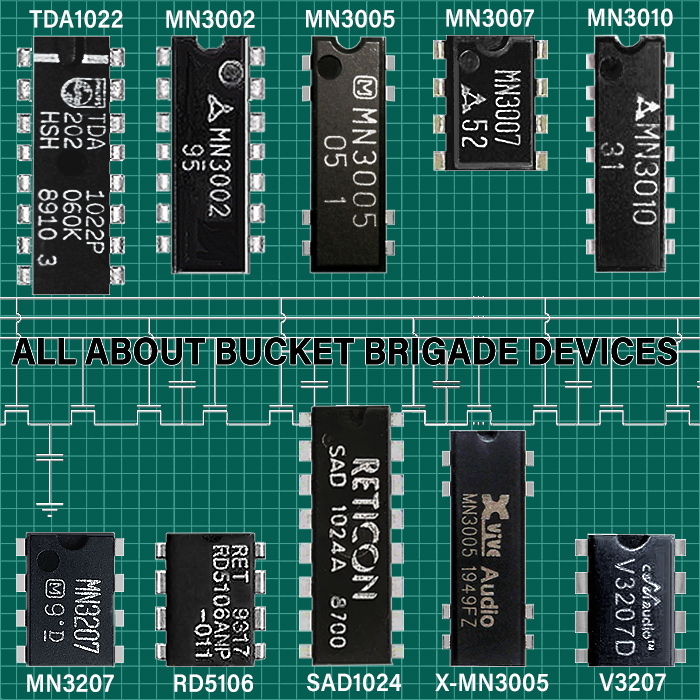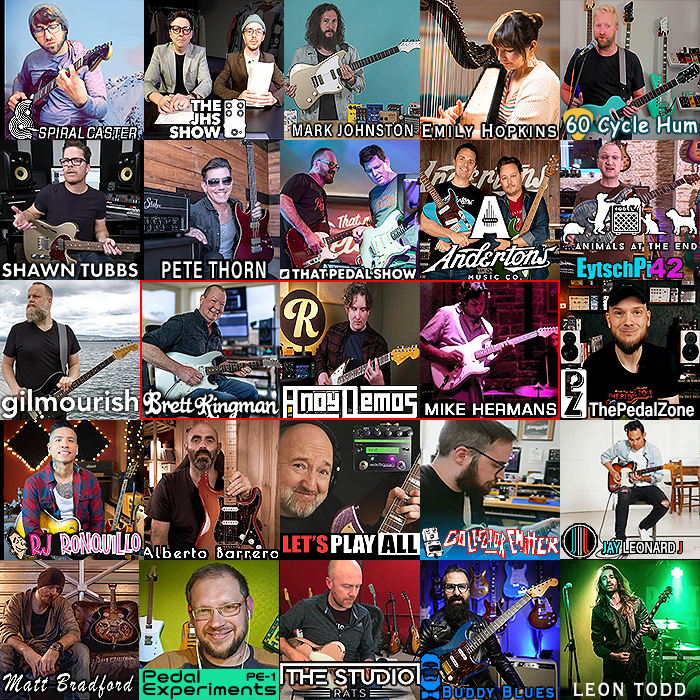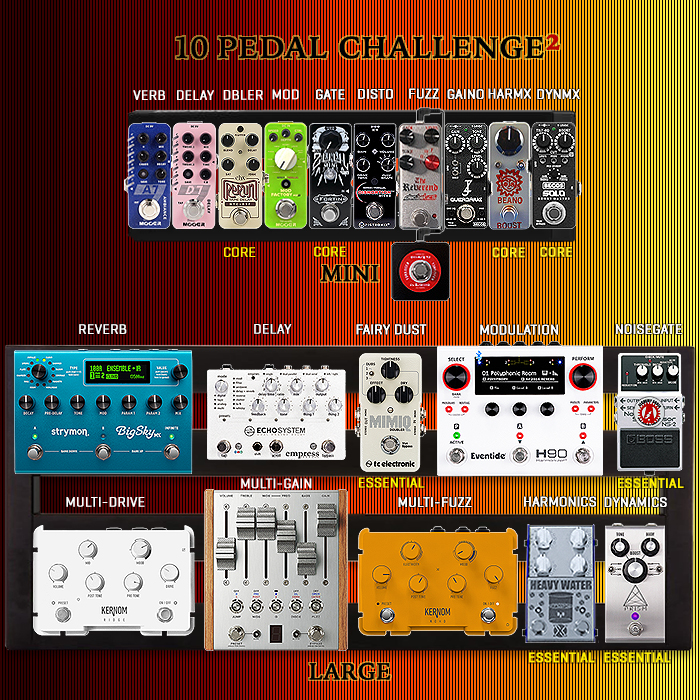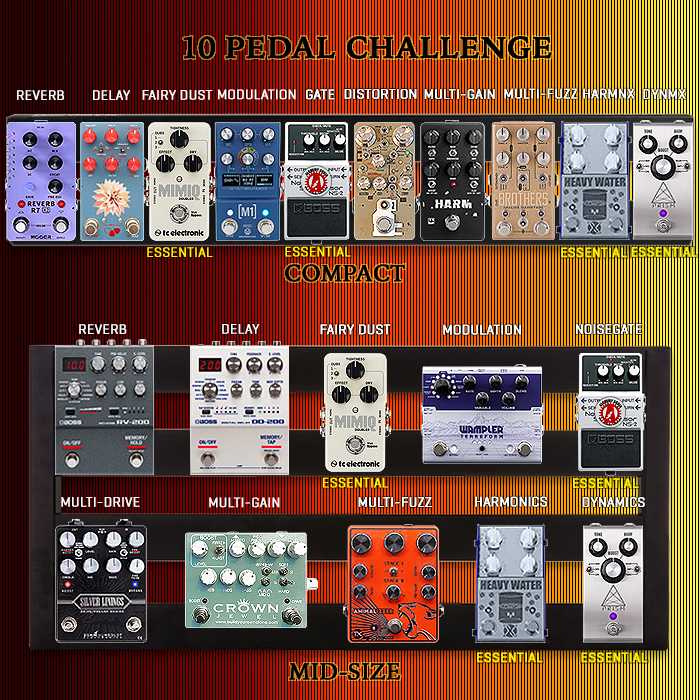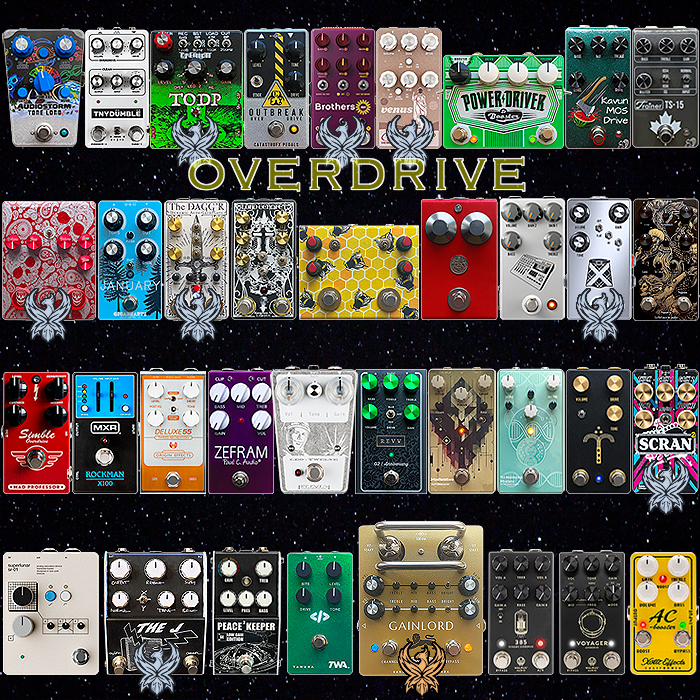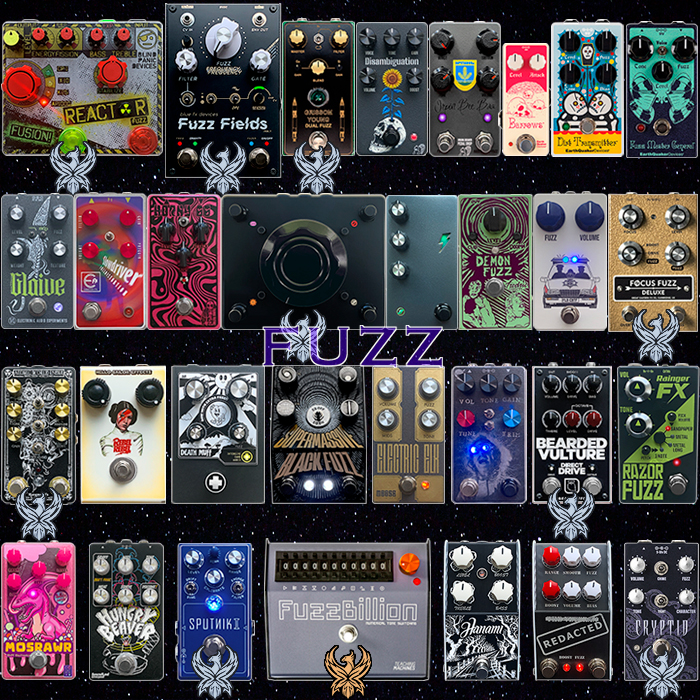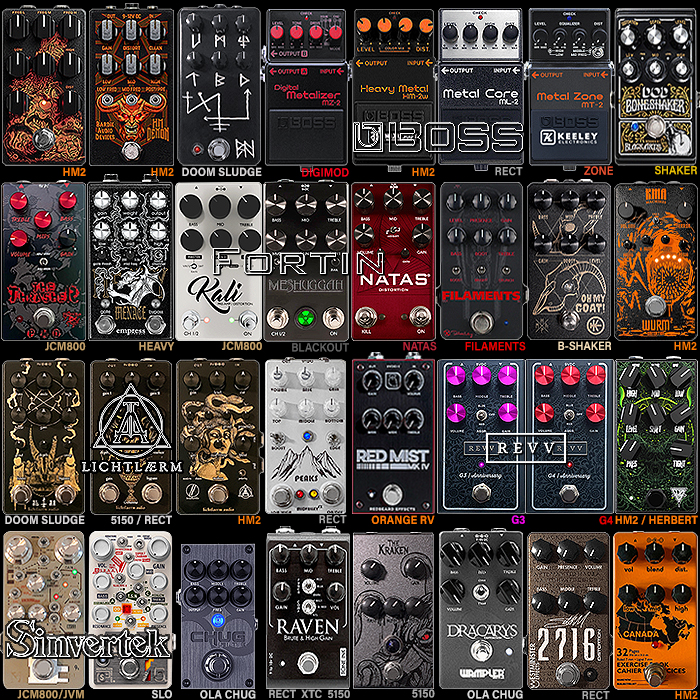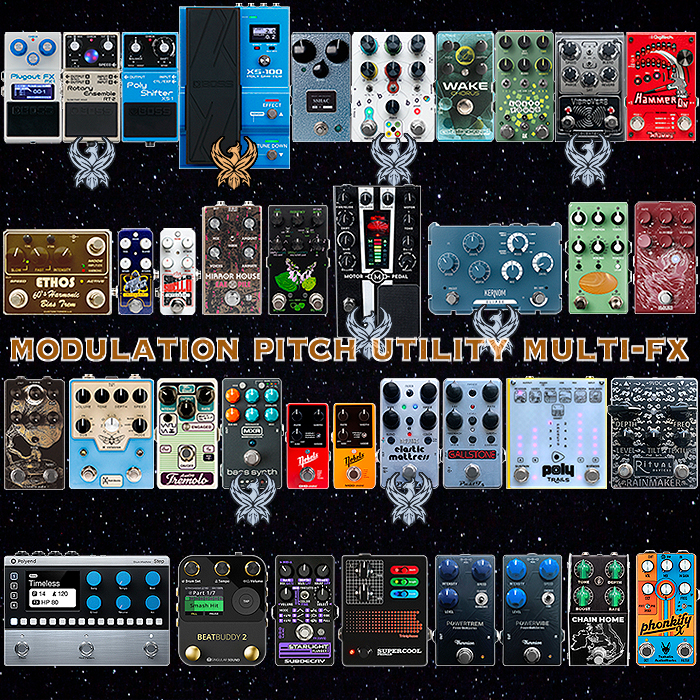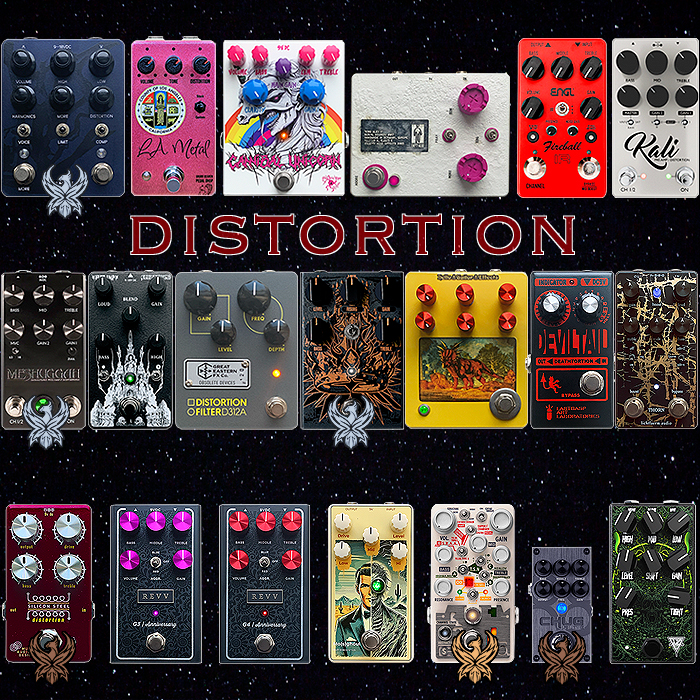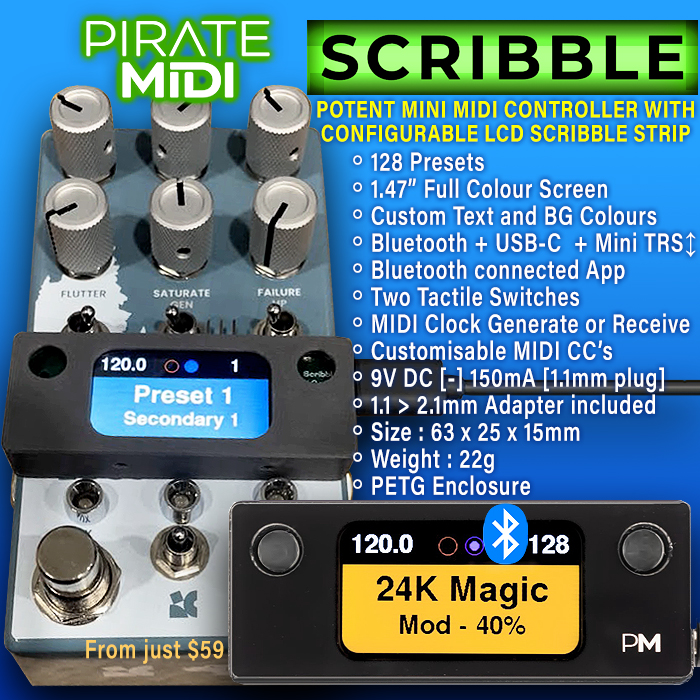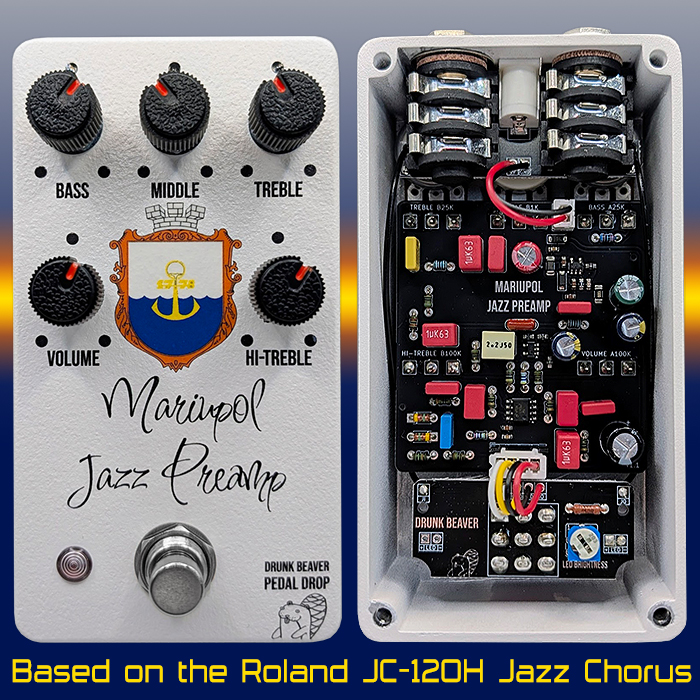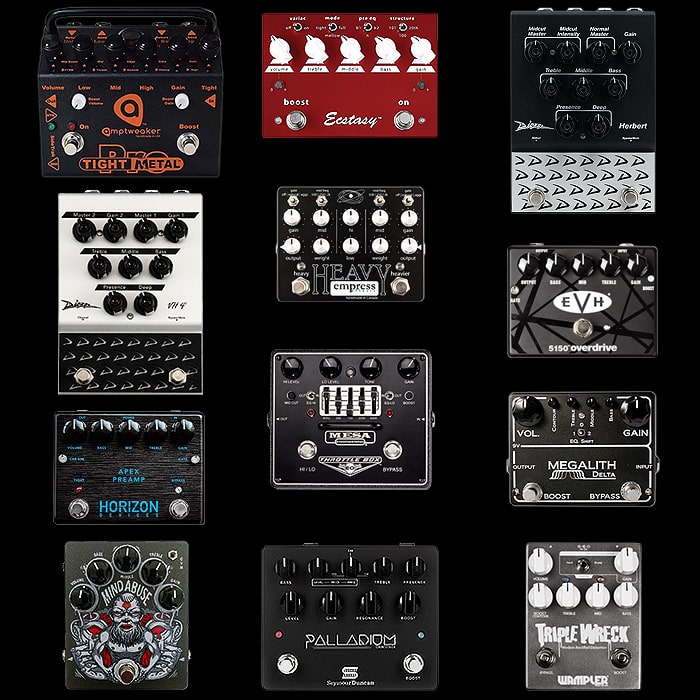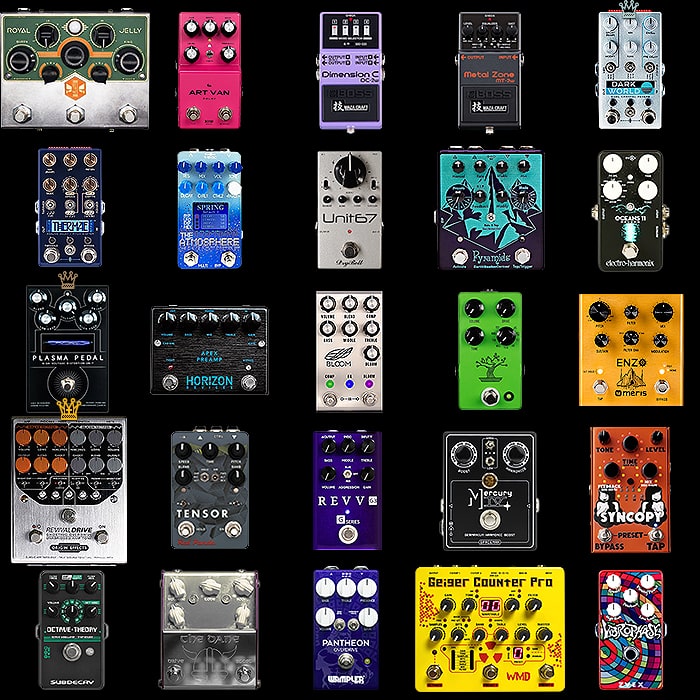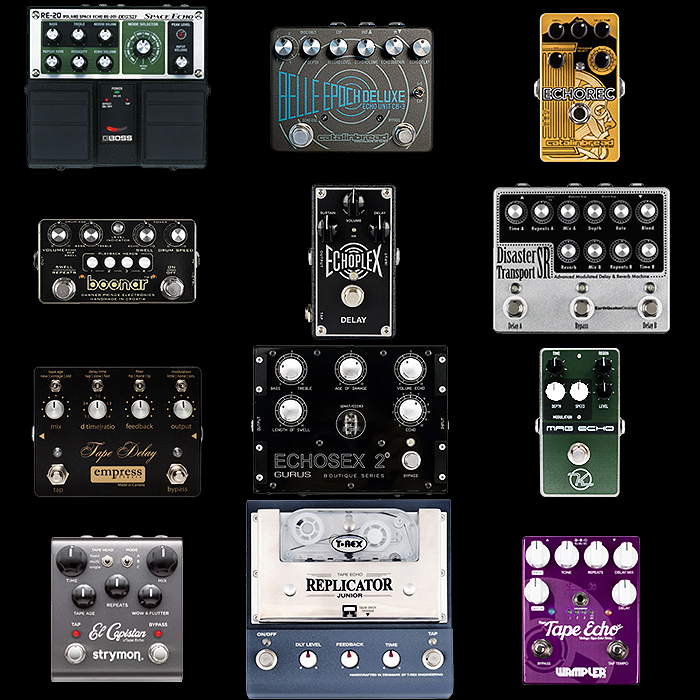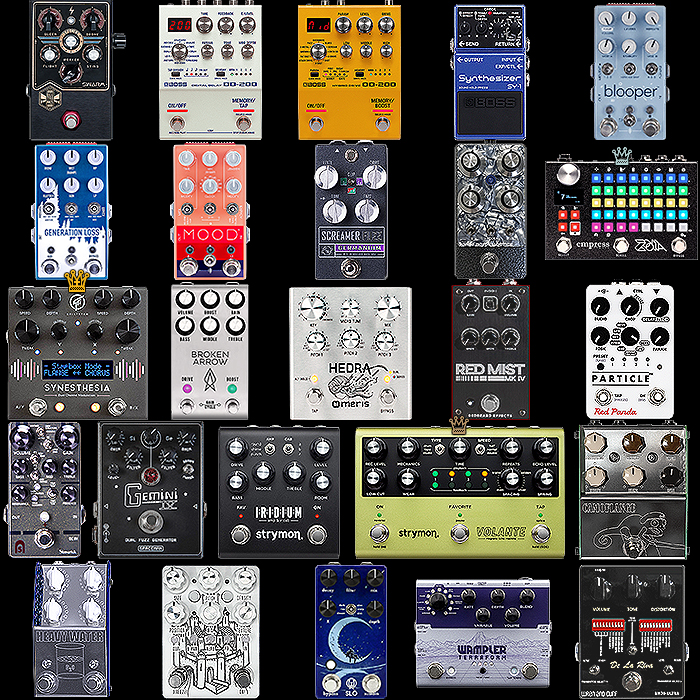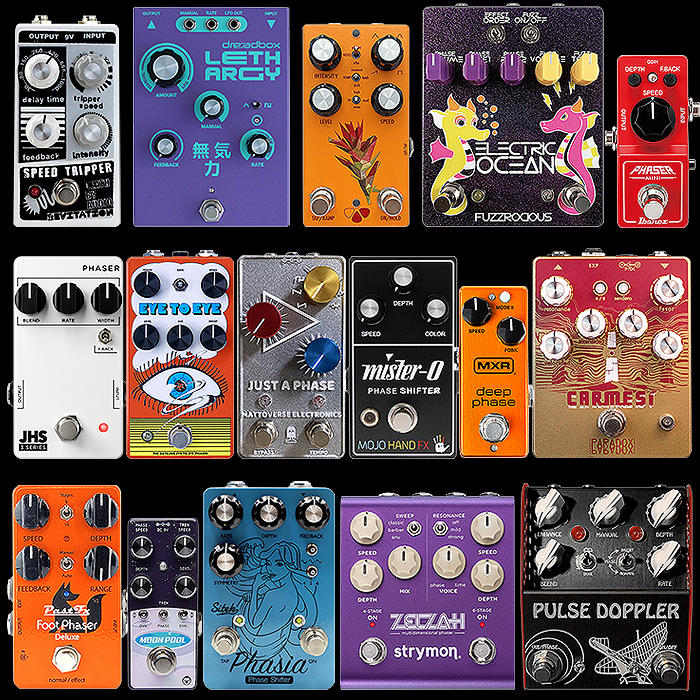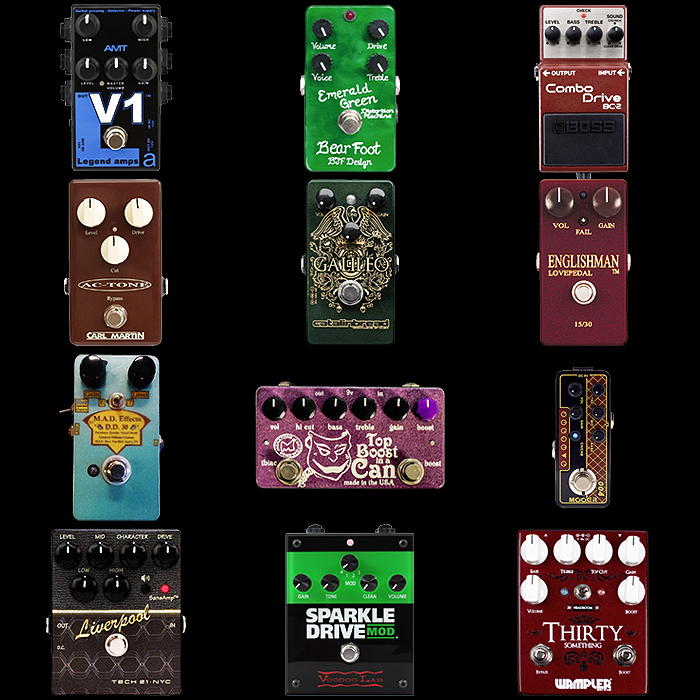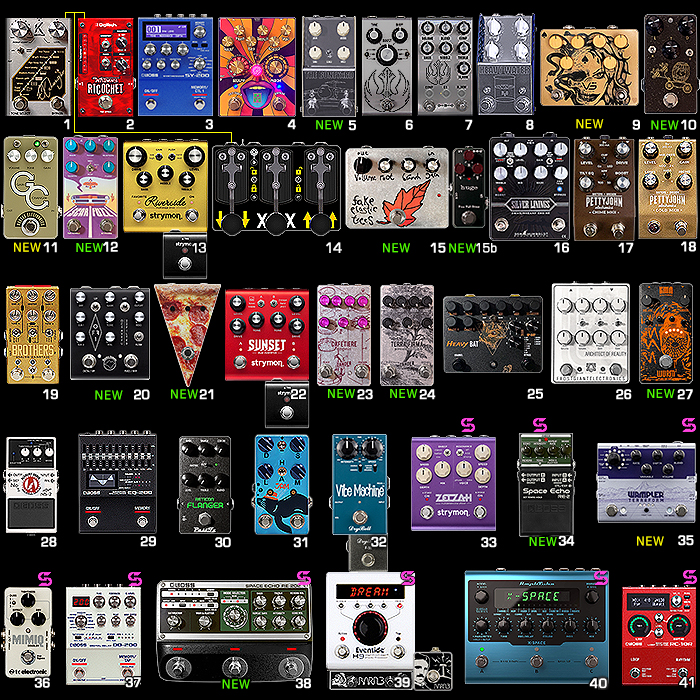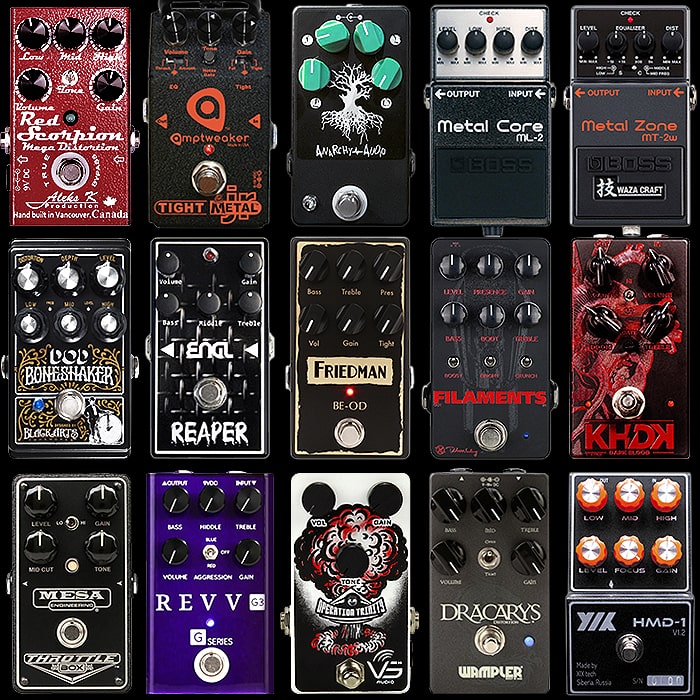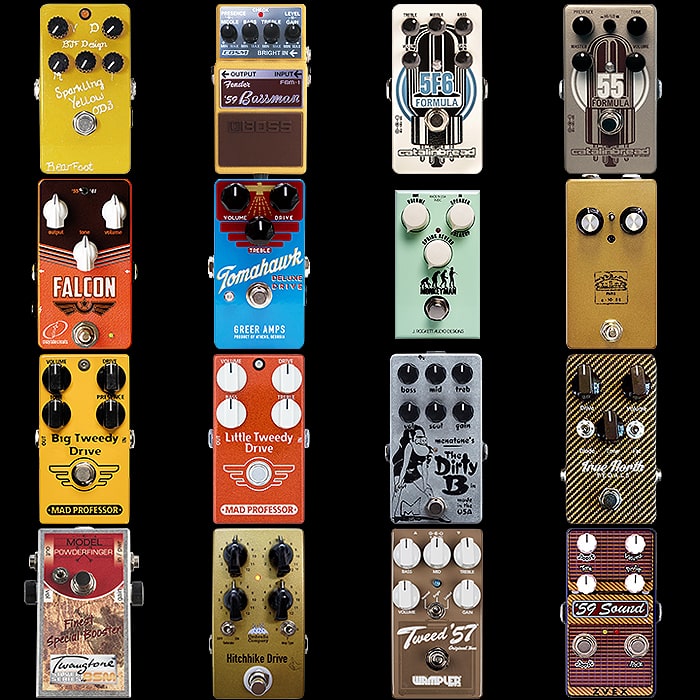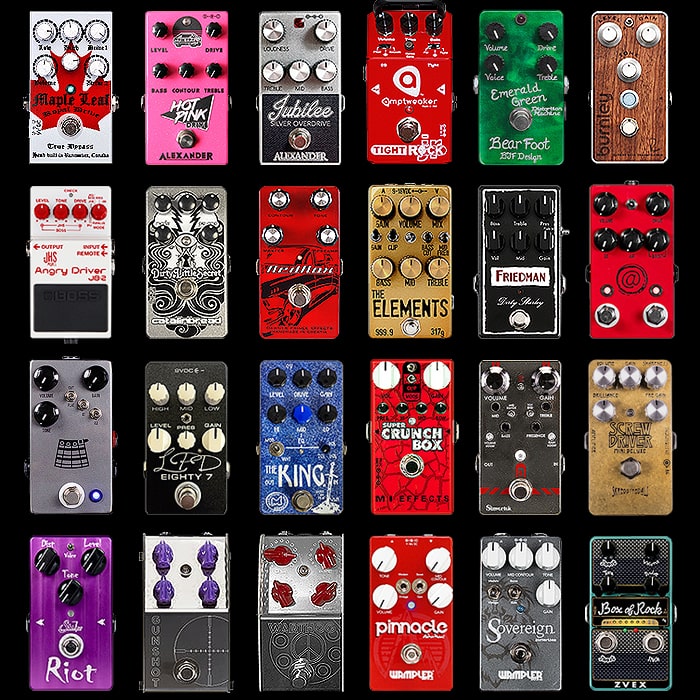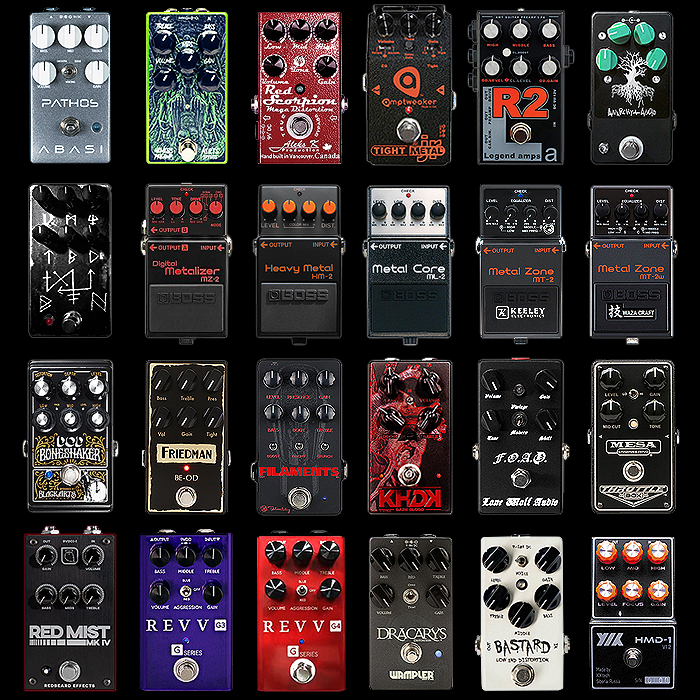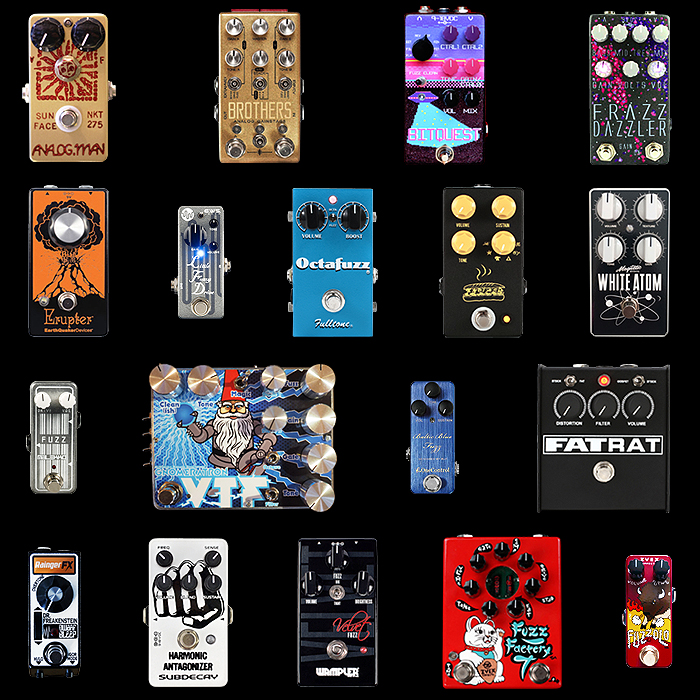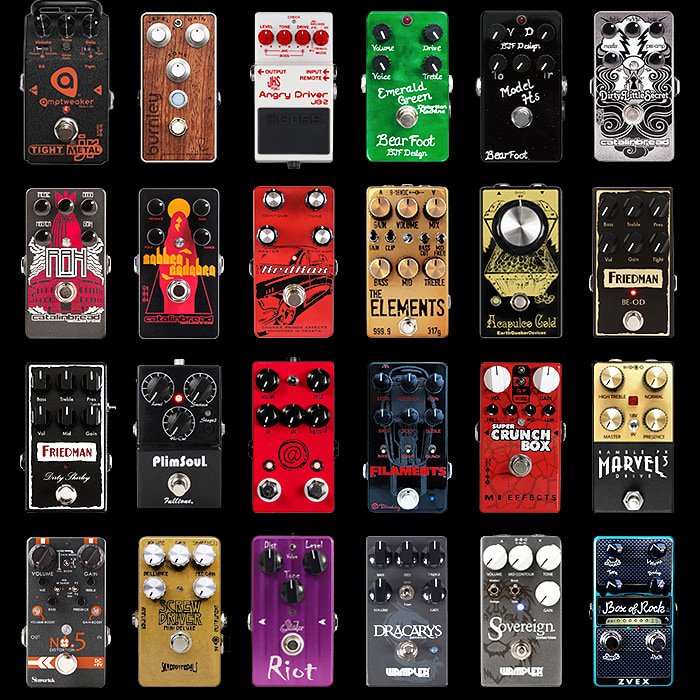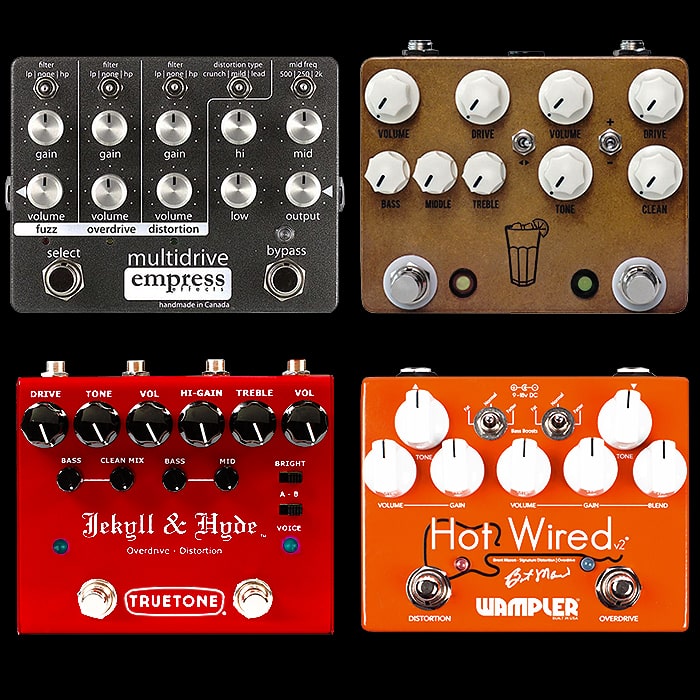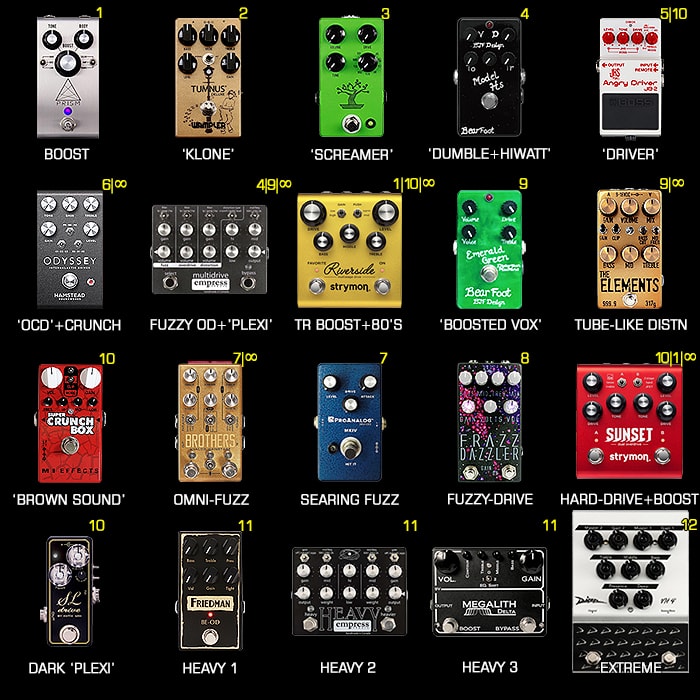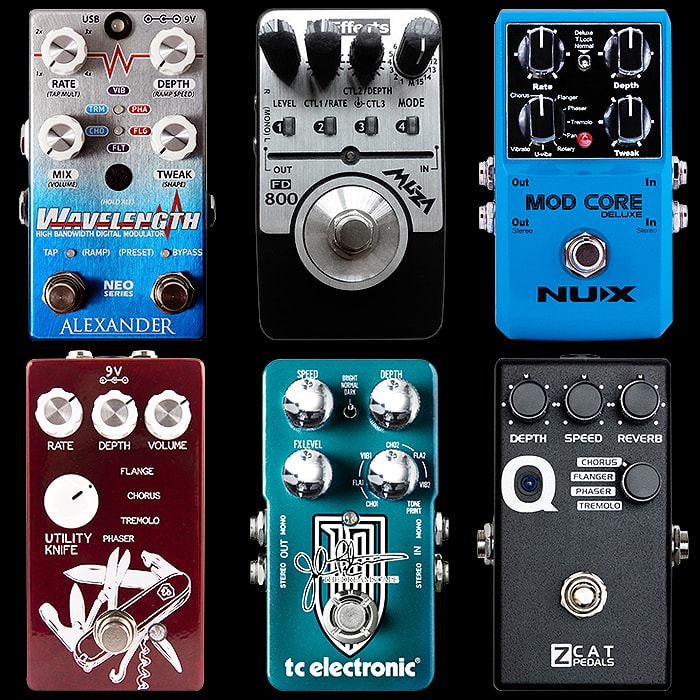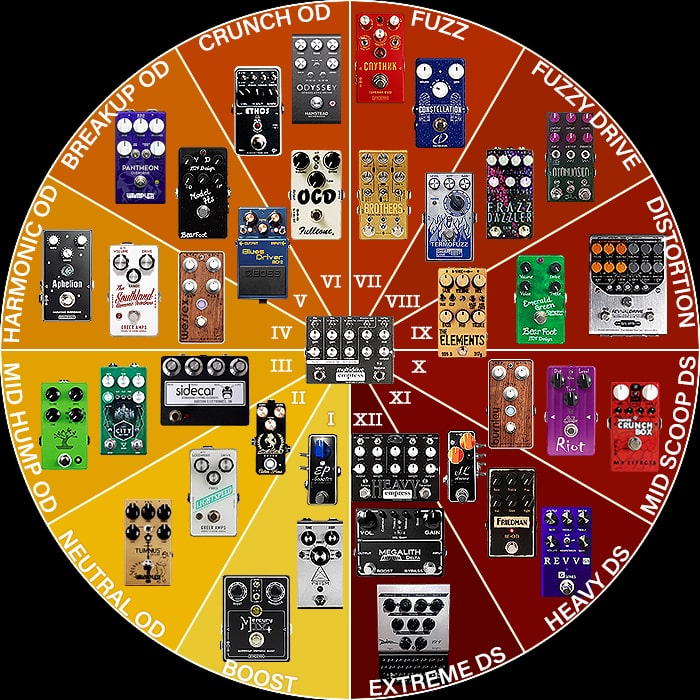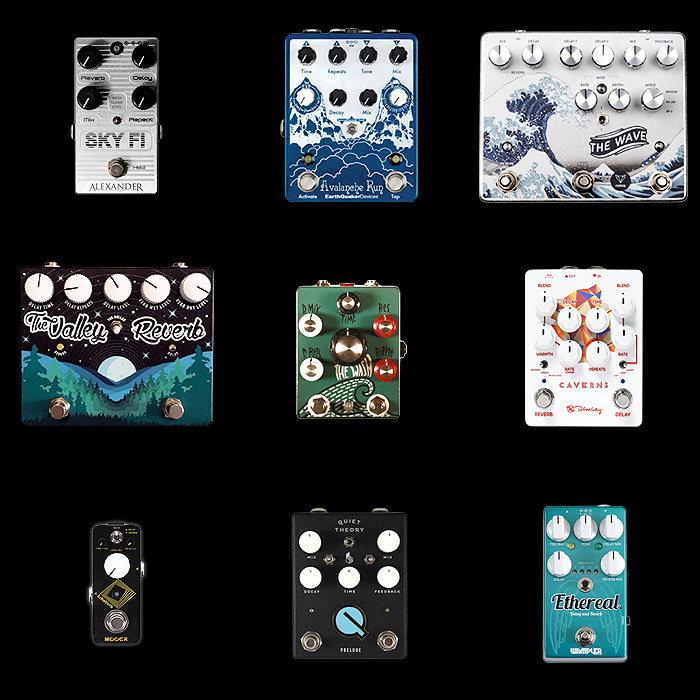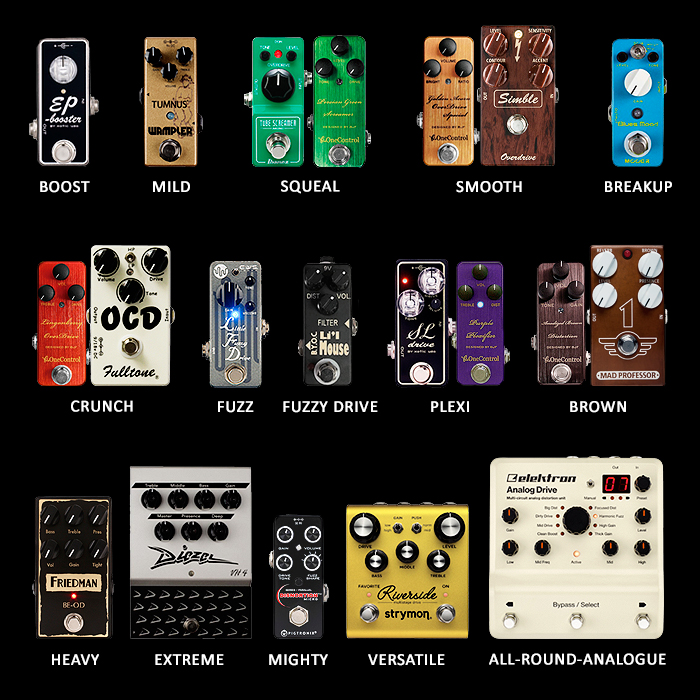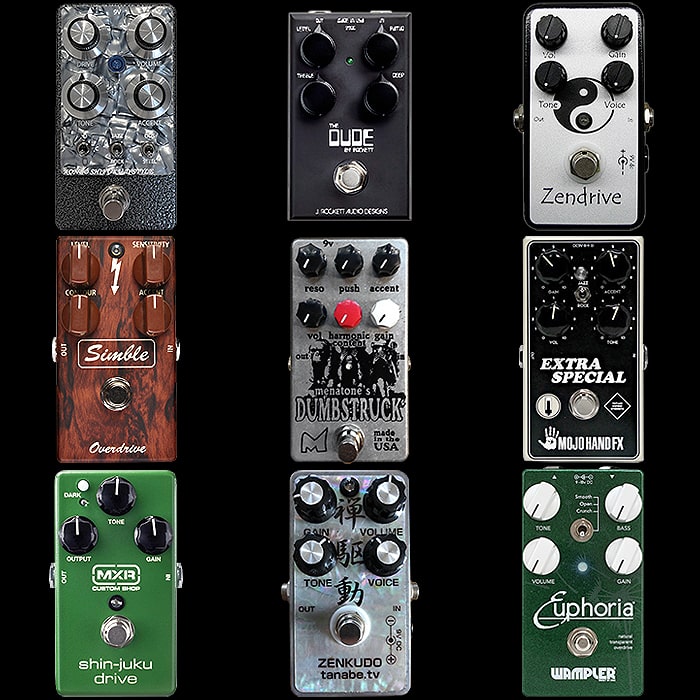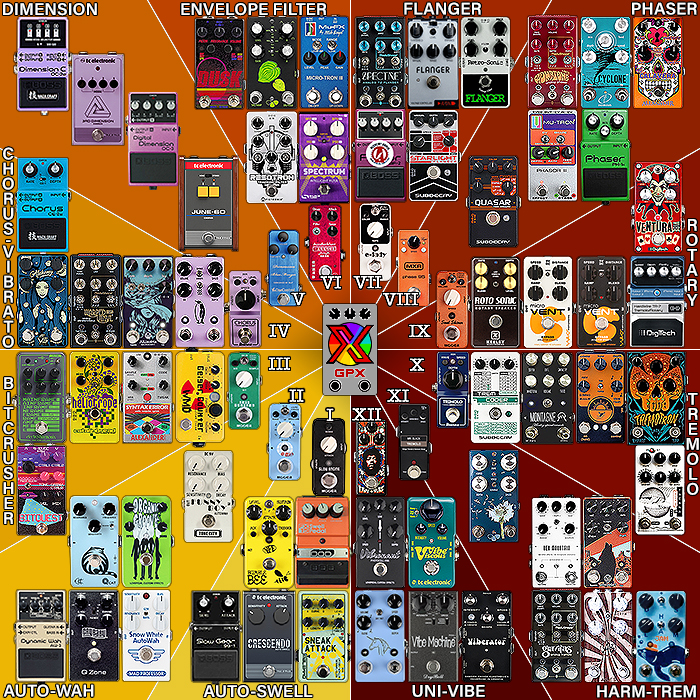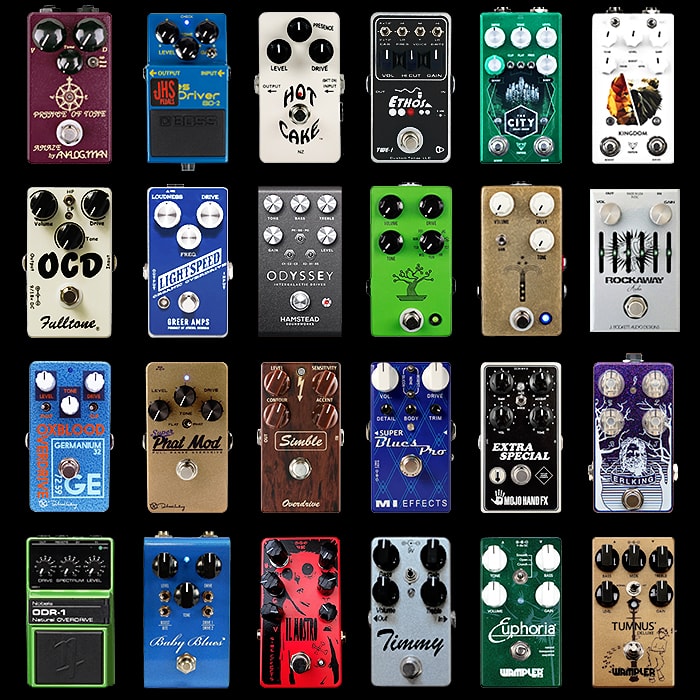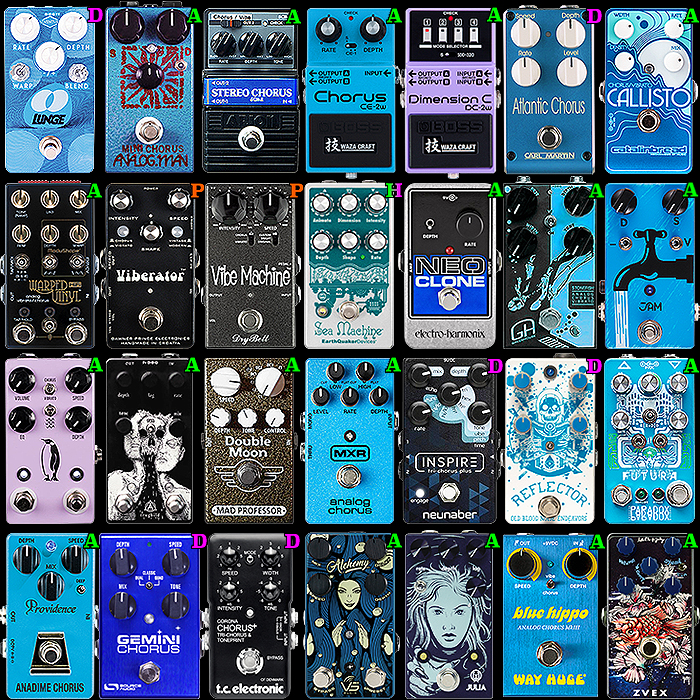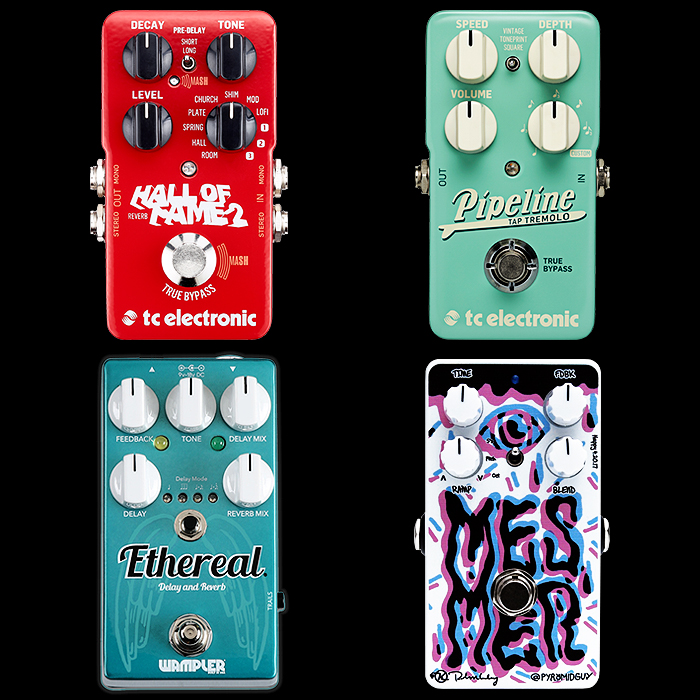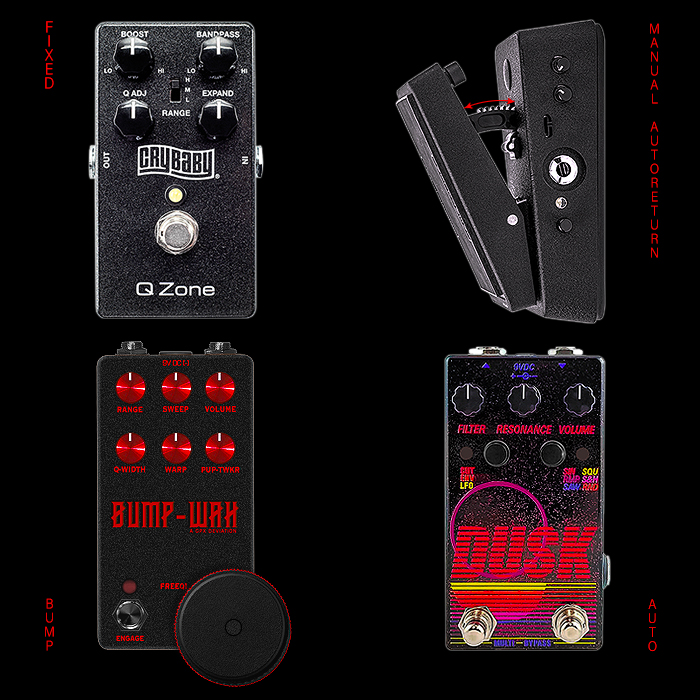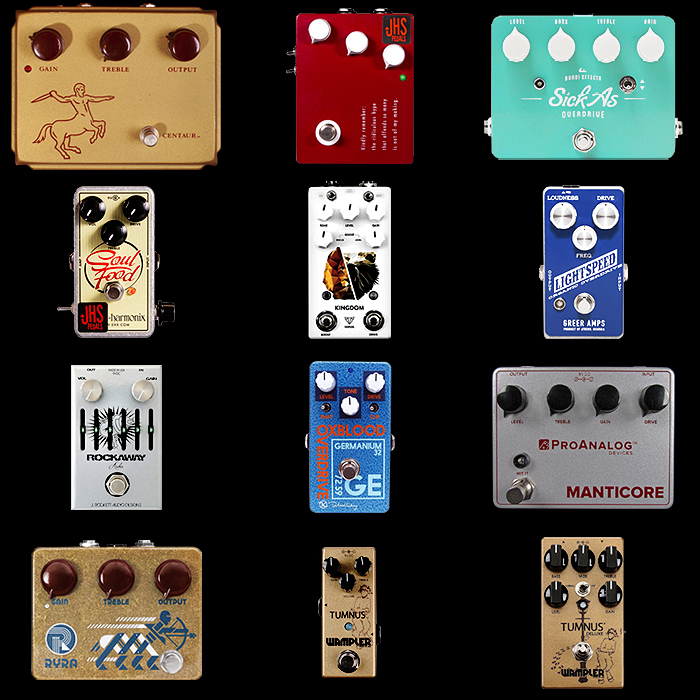Brian Wampler Finally Releases his 11 Mode Terraform Modulation Workstation after a Year's Worth of Tweaking
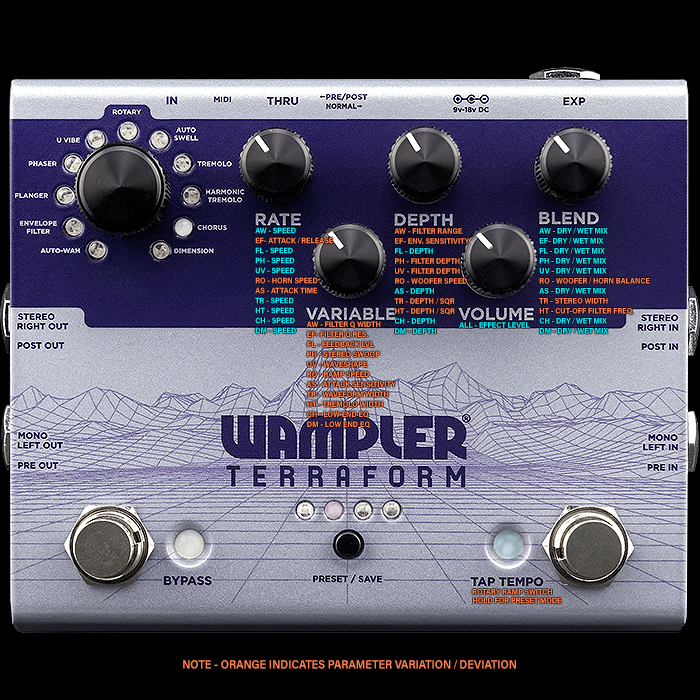
Seemingly not as long in gestation as Keeley’s ECCOS Flange-Modulated Tape Delay, this pedal has nonetheless featured at a couple of NAMM shows too. There were significant changes between the Winter and Summer NAMM variants, but since then it looks to have been just about the most intensive process of calibration and fine-tuning - in order to get each of the 11 algorithms spot-on.
Interestingly, when Brian first announced the Terraform, Boss’s MD-200 / 200 series wasn’t even on the radar. Both featured significantly at Summer NAMM, and Boss was the first to the punch in the end. On a superficial head-to-head comparison level the Boss has a slightly richer feature set with 12 algorithms to the Terraform’s 11, and 6 parameter controls to 5, plus Tap Division selection. Otherwise those two pedals are really quite similar. I will likely do a follow-up post to this one where I compare and contrast the 4 current vaguely similar medium enclosure Modulation Workstation offerings - this Terraform, the Boss MD-200, Eventide H9 Max and Keeley Super Mod Workstation - I may even open up the group to include the original larger Modulation Workstations - Strymon Mobius, Boss MD-500 and Eventide’s ModFactor.
In any case it’s worth detailing the evolution of the Terraform, which when first introduced at Winter NAMM 2019 was to feature the following modulations/algorithms :
- Additive Flanger
- Subtractive Flanger
- TZ (Through Zero) Flanger
- 90 Phase
- Vibe
- Slow (Auto Swell)
- Tremolo
- Harmonic Tremolo
- Dimension C
- 3-Voice Chorus
- Chorus
But then very wisely changed to its improved final configuration/formation at Summer NAMM :
- Auto-Wah
- Envelop Filter
- Flanger
- Phaser
- U Vibe
- Rotary
- Auto Swell
- Tremolo
- Harmonic Tremolo
- Chorus
- Dimension
Which compares very favourably to the Boss MD-200 algorithms :
- Chorus
- CE-1 Chorus
- Flanger
- Phaser
- Vintage Phaser
- Classic Vibe
- Vibrato
- Tremolo
- Rotary
- Auto Wah
- Slicer
- Overtone
While the Boss MD-500 has a lot more sub- and secondary Modes and allows you to combine two algorithms at a time - for instance offering 4 Chorus Types - Prime | CE-1 Chorus | CE-1 Vibrato | Tri-Chorus :
- Chorus
- Flanger
- Phaser
- Classic Vibe
- Vibrato
- Tremolo
- Dimension
- Ring Mod
- Rotary
- Filter
- Slicer
- Overtone
Overall I personally have 10 Essential Favourite Modulations for my own playing (alphabetical) :
- Chorus
- Dimension
- Envelope Filter / Auto Wah
- Flanger
- Phaser
- Rotary
- Uni-Vibe
- Tremolo
- Tremolo - Harmonic
- Vibrato
Which means that currently and on that level, only the Terraform is fully covering all my needs.
Obviously the Bosses are very much Boss-centric in taking from Boss’s own line of compact stompbox effects, and will almost always deliver superior choruses, while there’s an interesting omission of the Dimension C on the MD-200, and the currently increasingly popular Harmonic Tremolo variant.
You could easily argue that Wampler’s 11 modes would be universally preferable to Boss’s 12, while I feel Boss’s MD-500 pedal still has the best combination of Modulation modes and features overall, yet in a significant larger enclosure and is missing the currently much sought-after Harmonic Tremolo Variant too.
I will need to get my hands properly on the Wampler unit to ascertain exactly how good those algorithms are, and how well they mesh with my own rig - I feel I need to do a little more due-diligence on the research front first.
The 11 Terraform Modulation Algorithms - clockwise from bottom left of dial :
AUTO-WAH
- Rate : Effect Speed - CCW is slow, CW is fast
- Depth : Filter Range - CCW is low sensitivity, CW is maximum
- Variable : Filter Q Thickness - CCW is thin, CW is fat
- Blend : Dry/Wet Mix - CCW is fully dry, CW is fully wet
- Volume : Effect Level - CCW -6db, middle is 0db, CW +6db
ENVELOPE FILTER
- Rate : Speed of the Attack & Release
- Depth: Envelope Sensitivity - CCW is much less sensitive than CW
- Variable : Filter Q Value - CCW is non-resonant, CW is resonant
- Blend : Dry/Wet Mix - CCW is fully dry, CW is fully wet
- Volume : Effect Level - CCW -6db, middle is 0db, CW +6db
FLANGER
- Rate : Effect Speed - CCW is slow, CW is fast
- Depth : Effect Depth - maximum is “through zero flanging”
- Variable : Feedback Level - CCW is no feedback, middle is some feedback, CW is high negative feedback
- Blend : Dry/Wet Mix - CCW is fully dry, CW is fully wet
- Volume : Effect Level - CCW -6db, middle is 0db, CW +6db
PHASER
- Rate : Effect Speed - CCW is slow, CW is fast
- Depth : Filter Depth - CCW is shallow, CW is much deeper
- Variable : Stereo width of the Swoop
- Blend : Dry/Wet Mix - CCW is fully dry, CW is fully wet
- Volume : Effect Level - CCW -6db, middle is 0db, CW +6db
U VIBE
- Rate : Effect Speed - CCW is slow, CW is fast
- Depth : Filter Depth - CCW is small range, CW is high
- Variable : Waveshape - CCW maximises the higher part of the throb, maximum emphasises the lower
- Blend : Dry/Wet Mix - CCW is fully dry, CW is fully wet
- Volume : Effect Level - CCW -6db, middle is 0db, CW +6db
ROTARY
- Rate : Max Horn Speed - CCW is slow, CW is fast
- Depth : Max Woofer Speed - CCW is slow, CW is fast
- Variable : Ramp Speed (Horn and Woofer Acceleration) - CCW is slow, CW is fast
- Blend : Woofer/Horn Balance - CCW 100% woofer, CW 100% horn
- Volume : Effect Level - CCW -6db, middle is 0db, CW +6db
- *TAP TEMPO : Activates Ramp transition as set on Variable control
AUTO SWELL
- Rate : Swell Attack Time - CCW is slow, CW is fast
- Depth : Modulation Depth - CCW no modulation, CW high modulation
- Variable : Volume Sensitivity (Pick Attack) - CCW is quick, CW is slow
- Blend : Dry/Wet Mix - CCW is fully dry, CW is fully wet
- Volume : Effect Level - CCW -6db, middle is 0db, CW +6db
TREMOLO
- Rate : Effect Speed - CCW is slow, CW is fast
- Depth : Effect Depth - CCW is shallow, CW is deep, Max is Square Wave
- Variable : Waveform Width / Peak Interval - CW is much WIDER than CCW
- Blend : Stereo Width of Effect - CCW is mono, middle is 90° wide, CW is 180° wide
- Volume : Effect Level - CCW -6db, middle is 0db, CW +6db
HARMONIC TREMOLO
- Rate : Effect Speed - CCW is slow, CW is fast
- Depth : Effect Depth - CCW is shallow, CW is deep, Max is Square Wave
- Variable : Width of Tremolo Effect / Peak Interval - CW is much WIDER than CCW
- Blend : Cut-Off Frequency between Low and High Filters
- Volume : Effect Level - CCW -6db, middle is 0db, CW +6db
CHORUS
- Rate : Effect Speed - CCW is slow, CW is fast
- Depth : Effect Depth - CCW is shallow, CW is deep
- Variable : Amount of Low-End Present in Effect
- Blend : Dry/Wet Mix - CCW is fully dry, CW is fully wet
- Volume : Effect Level - CCW -6db, middle is 0db, CW +6db
DIMENSION
- Rate : Effect Speed - CCW is slow, CW is fast
- Depth : Effect Depth - CCW is shallow, CW is deep
- Variable : Amount of Low-End Present in Effect
- Blend : Dry/Wet Mix - CCW is fully dry, CW is fully wet
- Volume : Effect Level - CCW -6db, middle is 0db, CW +6db
Best of Terraform Video Demos
Final Thoughts
Judging from all of the above Demos, this certainly sounds like a killer pedal, and it really seems like those extra months of tweaking have produced the goods. I always find differences in approach interesting for degrees of comparison, and while the Boss MD-200 equivalent has more controls, and more variable controls - even doubling up the Effect Level as a Dry/Wet Blend for some algorithms, it actually feels that Brian has got his own specific formula for this just about perfect with the Terraform.
He includes a handy quick reference card - which you need for a few of the algorithms, but likely the Terraform is more learnable than the MD-200 - you may have seen the That Pedal Show episode were Mick and Dan struggled to recall the different parameters of that. The Terraform comes with clever Pre/Post routing built in for Mono cabling/wiring, and still further optimises those effects for stereo output. The Terraform also has 8 Presets to Boss's 4 - I actually always feel that a pedal should have as many presets at least as there are algorithms - as it signifies that all those algorithms are quality and worthy of inclusion on presets - also - you can more easily then tweak and save each algorithm to your own particular preferences.
I was also wondering about how you switch easily from Preset Mode to Manual Mode - when Brian finally demonstrated that you just hold down the Tap Tempo footswitch to switch between Modes and step through presets. I still feel that in the larger category the dual-simultaneous effects of the Boss MD-500 keep that as the features champion overall - but at this particular medium format / level, in terms of completeness of coverage and simplicity of use, the Wampler must surely have it.
I swapped out (rotated/parked) my own much loved Boss MD-500 for the Empress Zoia - which I have still to get fully to grips with, while there are still 4 analog modulations in my chain (Chorus, Flanger, Tremolo, Phaser) plus occasionally an analog Uni-Vibe, and I also have the Eventide H9 Max - which bizarrely still doesn't have a Uni-Vibe mode, but has recently added a Harmonic Tremolo mode. I had intended for the Empress Zoia to take care of my Digital and Complex Modulations - sharing that duty with the H9, but I so like the combination of algorithms here that I do think I will get this pedal at some stage for alternative rotation duties with the Zoia!
Obviously the pedal sounds great, but it's really the perfect combination of those cleverly selected Modulation / Algorithm types that carries the day. This could very well be Brian Wampler's most significant pedal for a very long time to come.

